Sotheby's Continues Market Leadership in Chinese Works of Art
Hong Kong - Nicolas Chow, Chairman for Sotheby’s Asia, International Head and Chairman, Chinese Works of Art Department, comments, “The May and June sale series concludes yet another phenomenal season for Chinese Works of Art at Sotheby’s Asia, attesting to our reputation as the leading auction house for the category. We attribute these extraordinary results to our team’s unparalleled passion, expertise and exceptional network in the field. We look forward to carrying this momentum on to our upcoming Autumn Sale series, opening this October.”
2018 Chinese Works of Art May and June Sale Series Totals HK$58.2 Million / US$7.47 Million Almost Double the Pre-Sale Estimate.
TOP LOTS OF THE SEASON
TOP 5 LOTS OF SPRING 2018
The Lost Wisdom Sutra: A Treasure from the Golden Age of Xuande. Lot 101. Two Sets Of Highly Important, Exceedingly Rare and Sumptuously Brocaded Leporello Albums of Illuminated Wisdom Sutra Commissioned by Imperial Order and Supervised By Huijin Ming Dynasty, Xuande Period; Execution In Liquid Gold On Indigo-Coloured Goat-Brain Ritual Paper. Estimate Upon Request. Price Achieved: HK$238,807,500 / US$30,426,464. *World Auction Record for A Buddhist Manuscript. Courtesy Sotheby's
Cf. my post: Sotheby’s Hong Kong Chinese Works of Art Spring Sales 2018 To Take Place on 3 April
Imperial Alchemy: The H.M. Knight Falangcai Bow. Lot 1. A Superbly Enamelled, Fine and Exceedingly Rare Pink-Ground Falangcai Bowl, Puce-Enamel Yuzhi Mark And Period of Kangxi (1662-1722). Estimate Upon Request. Price Achieved: HK$238,807,500 / US$30,426,464. Courtesy Sotheby's
Cf. my post: Sotheby’s Hong Kong Chinese Works of Art Spring Sales 2018 To Take Place on 3 April
A Rediscovered Imperial Heirloom: Ten Auspicious Landscapes of Taishan by Qian Weicheng. Lot 3301. Qian Weicheng, Ten Auspicious Landscapes of Taishan. Ink And Colour On Paper, Handscroll. Estimate HK$50,000,000 - 70,000,000 / US$6,370,500 - 8,918,700. Price Achieved: HK$146,794,000 / US$18,703,024. Courtesy Sotheby's
Cf. my post: Sotheby’s Hong Kong Chinese Works of Art Spring Sales 2018 To Take Place on 3 April
Lot 3620. A Fine and Magnificent Lemon-Yellow and Underglaze-Blue ‘Dragon’ Vase, Tianqiuping, Seal Mark and Period of Qianlong (1736-1795). Estimate HK$30,000,000 - 40,000,000 / US$3,822,300 - 5,906,400. Price Achieved: HK$70,586,500 / US$8,993,426. Courtesy Sotheby's
Cf. my post: Sotheby’s Hong Kong Chinese Works of Art Spring Sales 2018 To Take Place on 3 April
Lot 3622. An Exceptionally Fine and Rare Ruby-Ground Yangcai Vase, Seal Mark and Period of Qianlong (1736-1795). Estimate HK$40,000,000 - 60,000,000 / US$5,096,400 – 7,644,600. Price Achieved: HK$50,264,500 / US$6,404,200. Courtesy Sotheby's
Cf. my post: Sotheby’s Hong Kong Chinese Works of Art Spring Sales 2018 To Take Place on 3 April
TOP TEN of 'Scholarly Art from the Collection of Mr and Mrs Gerard Hawthorn', 31 may 2018
Lot 33. A rare gilt and enamelled porcelain figure of Amitayus, Seal mark and period of Qianlong, dated xinmao year (in accordance with 1771); 16 cm, 6 1/4 in. Estimate HK$1,000,000 - 1,500,000. Sold for HK$2,750,000 (350,488 USD) to an Asian Trade. Courtesy Sotheby's
finely modelled in imitation of gilt-bronze, the deity seated in vajraparyankasana on a double-lotus base, the hands folded in dhyanamudra, wearing a long flowing dhoti opening at the chest to reveal an elaborate necklace, the face with meditative expression, the hair gathered into a high chignon save for two curling braids falling off the sides, surmounted by a five-leaf diadem, the top of the base inscribed with a blue-enamelled mark Daqing Qianlong xinmao nian zao ('Made in the xinmao year during the Qianlong reign of the great Qing dynasty', in accordance with 1771), the base with separate porcelain plug.
Note: The simulation of materials using porcelain was particularly popular during the 18th century, as it provided the opportunity for potters to display their creative proficiency in the medium while satisfying the Qianlong Emperor's taste for the novel. See also two closely related examples sold in these rooms, 10th April 2006, lot 1743; and the other, 30th April 1991, lot 138; and a third figure sold at Christie's New York, 1st December 1983, lot 526.
Compare a similar figure attributed to the Qianlong period, but depicted kneeling on one knee, published in I.L. Legeza, A Descriptive and Illustrated Catalogue of the Malcolm MacDonald Collection of Chinese Ceramics, London, 1972, pl. CXLI, no. 384; and a pair sold at Christie's New York, 24th/25th March 2011, lot 1748. For a seated figure of Buddha, see one in the Nanjing Museum, Nanjing, published in The Official Kiln Porcelain of the Chinese Qing Dynasty, Shanghai, 2003, p. 322.
Lot 31. A superb inlaid huanghuali 'huntsman' box and cover, attributed to Zhou Zhu, Ming dynasty, Jiajing period (1522-1566); 6.8 by 13.8 by 10.8 cm, 2 5/8 by 5 3/8 by 4 1/4 in. Estimate HK$1,000,000 - 1,500,000. Sold for HK$2,250,000 (286,762 USD) to an Asian Private. Courtesy Sotheby's
the cover finely inlaid in mother-of-pearl, soapstone, malachite, stained horn and other hardstones with a hunting scene, depicting the legendary archer, Yang Youji, on a galloping horse, loosing an arrow and bringing down a deer, detailed with a crane in flight, the rims bordered with wire-inlaid key-fret bands.
Note: The present box is a rare example of a group of inlaid boxes depicting huntsmen attributed to the work of the Jiajing period master carver and artist, Zhou Zhu. As is characteristic of such works, the intricate inlay of various materials to depict a naturalistic scene is outstanding. For a detailed discussion on Zhou and his work, see the note to lot 12 in this catalogue.
The design on the present box illustrates the legend of the master archer, Yang Youji, who lived in the Spring and Autumn Period during the reign of Chu Zhuangwang (590-560BC). In preparation for war, Chu initiated a series of tests for skilled archers in which Yang joined.
Boxes attributed to Zhou Zhu and also depicting huntsman scenes include a slightly smaller rectangular example, from the Water, Pine and Stone Retreat collection, sold in these rooms, 4th April 2012, lot 116; and a circular box, from the collection of Mary and George Bloch, also sold in these rooms, 23rd October 2005, lot 90. Compare also larger boxes illustrating more complex hunting scenes, such as one, in the Palace Museum, Beijing, published in The Palace Museum Collection of Elite Carving, Beijing, 2004, pl. 100; and another depicting the legend of the master archer, Yang Youji, sold twice in these rooms, 10th April 2006, lot 1632, and again, 2nd June 2016, lot 88, from the collection of the Water, Pine and Stone Retreat Collection.
The inspiration for the decoration of the ‘huntsman’ boxes may have been drawn from contemporary or slightly earlier paintings; for example see a late-fifteenth century painting fragment included in the exhibition Turks: A Journey of a Thousand Years, 600-1600, The Royal Academy of Arts, London, 2005, cat. no. 162, depicting a huntsman on horseback holding a falcon.
Lot 7. A superbly carved and inlaid huanghuali lobed tray , attributed to Zhou Zhu, Ming dynasty, Jiajing period (1522-1566); 13.4 cm, 5 1/4 in. Estimate HK$500,000 — 700,000. Sold for HK$1,875,000 (238,969 USD) to an Asian Private. Courtesy Sotheby's
of rectangular form with cusped corners, the interior skilfully inlaid in malachite, soapstone and mother-of-pearl with a leafy branch bearing clusters of lychee, each fruit textured with a diaper pattern and the green leaves naturalistically detailed with veins, the outer rim bordered with a wire-inlaid T-scroll band.
A circular box and cover with closely related decoration, attributed to the School of Zhou Zhu, was sold in our Olympia rooms, 17th July 2003, lot 433, and again in these rooms, 2nd June 2016, lot 42, from the Water, Pine and Stone Retreat Collection. Compare also several boxes inlaid with multi-coloured materials, attributed to the late-Ming period, from the Qing Court collection, preserved in the Palace Museum, Beijing, illustrated in The Complete Collection of Treasures of the Palace Museum. Bamboo, Wood, Ivory and Rhinoceros Horn Carvings, Hong Kong, 2002, cat. nos 219-25.
The design on the present tray, fashioned with a leafy branch bearing clusters of lychee, is rich in auspicious symbolism. Lychee, with its Chinese name, lizhi, is homophonous with the phrase ‘establish a son’ (lizi) and represents abundance of offspring.
Lot 3. An imperial inscribed zitan stand, yuti mark and period of Qianlong, dated guiwei year (corresponding to 1763); 34 cm. Estimate: HK$80,000-120,000. Sold for HK$1,250,000 (159,312 USD) to an Asian Trade. Courtesy Sotheby's.
Cf. my post: Sotheby's Hong Kong Chinese Works of Art Sales to take place on 31 May and 1 June
Lot 29. A pair of jade-inlaid and canton enamelled zitan hatstands, Qing dynasty, Qianlong period (1736-1795); 29.4 cm, 11 5/8 in. Estimate: HK$300,000 — 500,000. Sold for HK$1,125,000 (143,381 USD) to an Asian Private. Courtesy Sotheby's.
each with a domed canopy centred with a jade lotus floret, encircled by a lappet band in canton enamel, the slender zitan shaft with a baluster mid-section, enamelled with lotus blossoms between archaistic scrolls, all supported on a thick circular jade and zitan base, the stone of an even white colour.
Note: This sumptuous pair of hat stands demonstrates the remarkable skill of craftsmen in all media during the Qianlong period, and their ability successfully to transform utilitarian vessels into visually striking works of art. Constructed from jade, painted enamel, zitan and silver, every step of the manufacturing process required careful planning, from the composition of the different elements into a harmonious whole to the manufacturing and assemblage of these elements. Complexly constructed and splendidly designed objects of this type were probably produced in Guangzhou, where some of the most experienced artisans were active.
Hat stands of this type with a domed top and an elongated baluster form vertical shaft appear to be an innovation of the Qianlong period and are known to have been produced in various mediums; see a carved jade and inlaid zitan example, sold in our New York rooms, 17th/18th March 2015, lot 230; another, in the British Museum, London, included in the Oriental Ceramics Society exhibition Chinese Jade throughout the Ages, Victoria and Albert Museum, London, 1975, cat. no. 463; a tortoiseshell version mounted with gilt-copper decoration, included in the exhibition Tributes from Guangdong to the Qing Court, Art Gallery, The Chinese University of Hong Kong, Hong Kong, 1987, cat. no. 78; and a Beijing enamel example painted with floral scrolls and a shou character, illustrated in Qingdai Gongting Shenghuo [Life in the Palace during the Qing Dynasty], Hong Kong, 1985, pl. 183.
Lot 43. An exceptional carved ivory 'Wen Chang and Kui Xing' group on a zitan stand, 17th century; figure: 7.3 cm, 2 7/8 in. Estimate: HK$350,000 — 450,000. Sold for HK$812,500 (103,533 USD) to an Asian Private. Courtesy Sotheby's.
the scholar Wen Quxing depicted seated wearing long flowing robes and a cap, his right arm supported by the kneeling demon Kui Xing with large bulging eyes, the ivory patinated to a warm honey tone, all supported on a finely carved and reticulated zitan stand in the form of a rocky grotto.
Note: Wen Chang (also referred to as Wen Quxing) is the patron deity of literature whose heavenly task, assigned by the Jade Emperor (Yudi), was to keep a record of all the meritorious men of letters. He was also believed to have power over the destinies of scholars and officials and was venerated by those in need of help with their examinations, particularly for obtaining the jinshi degree which was an essential requirement for any position in the official bureaucracy. In this carving he is shown pictured with his assistant, Kui Xing, who is responsible for issuing official testimonials.
A boxwood carving of Wen Chang and Kui Xing was included in the exhibition Series of Exceptional Carvings. Selected Ming and Qing Wood Carvings, National Museum of History, Taipei, 2005, cat. no. 78; and another was offered at Christie's New York, 17th September 2008, lot 110.
For an ivory carving of Kui Xing in the Palace Museum, Beijing, attributed to the late Ming dynasty, see one illustrated in The Complete Collection of Treasures of the Palace Museum. Bamboo, Wood, Ivory and Rhinoceros Horn Carvings, Hong Kong, 2002, pl. 107; and another published in S.E. Lucas, The Catalogue of Sassoon Chinese Ivories, vol. 1, London, 1950, pl. 166, where the author notes that the scholar Kui leapt into a river in humiliation after he was denied first place in the jinshiexaminations by the Emperor due to his repulsive features. After being saved by the mythical monster Ao, he was later deified to become the stellar patron of the literati.
Lot 19. A superbly inlaid zitan 'Flowers of the four seasons' brushpot, 17th century; 12.7 cm, 5 in. Estimate: HK$600,000 — 800,000. Sold for HK$687,500 (87,622 USD) to an Asian Private. Courtesy Sotheby's.
supported on four low feet, each side elegantly carved with a cartouche inlaid with semi-precious stones including malachite, carnelian and amber, one side with a spray of white orchids and lingzhi sprigs with a butterfly hovering above, the second with a gnarled flowering tree, the third with branches of chrysanthemum stemming from a jagged rock, and the last with a gnarled prunus tree and small stalks of bamboo, the wood of a rich dark-brown colour streaked with gold and russet veining.
Lot 32. A rare blue-glazed lobed 'chrysanthemum' teapot, Seal mark and period of Qianlong (1736-1795); 20.8 cm, 8 1/8 in. Estimate: HK$120,000 — 180,000. Sold for HK$525,000 (66,911 USD) to an Asian Trade. Courtesy Sotheby's.
of compressed globular form, subtly moulded with two rows of narrow lobes in the form of chrysanthemum petals, flanked by a short spout opposite a loop handle, the exterior evenly covered in an unctuous blue glaze save for a circular panel on the base reserved white and inscribed with a seal mark, the base with six spur marks.
Note: Teapots of this type were first produced in the Yongzheng period, and continued to be produced, although in smaller number during the Qianlong reign. Compare a Qianlong mark and period teapot and cover of this form, but with a celadon glaze, from the collection of Robert Chang, included in An Exhibition of Important Chinese Ceramics from the Robert Chang Collection, Christie's, London, 1993, cat. no. 66, and sold at Christie's Hong Kong, 2nd November 1999, lot 508; and an unmarked apple green-glazed version, from the collection of Fong Chow, sold at Christie's New York, 21st/22nd March 2013, lot 1206. For the Yongzheng prototype see one sold twice in these rooms, 18th May 1982, lot 291, and 2nd May 2005, lot 673; and a flambé-glazed example from the Qing court collection and still in Beijing, illustrated in Kangxi, Yongzheng, Qianlong. Qing Porcelain from the Palace Museum Collection, Hong Kong, 1989, pl. 112.
Lot 42. An inlaid huanghuali 'dragon' canted top table cabinet, Qing dynasty, 18th century; 42 by 41 by 27 cm, 16 1/2 by 16 1/8 by 10 5/8 in. Estimate: HK$400,000 — 600,000. Sold for HK$500,000 (63,725 USD) to an Asian Private. Courtesy Sotheby's.
finely inlaid with an array of multi-coloured hardstones and mother-of-pearl, the removable front cover carved in relief with a ferocious five-clawed dragon writhing amidst clouds and flames in pursuit of a flaming pearl, within a border of beribboned bajixiang and bats, the top with a raised panel enclosing a pavilion scene accented with rockwork and gnarled trees, further surrounded by detached flower sprays around the canted border, two sides embellished with birds and butterflies hovering among flower branches, flanked by a pair of C-shaped handles, set with seven similarly decorated drawers behind the front cover, the straight sides with exposed dovetail joints.
Note: Striking for the intricately carved and inlaid decoration that extends over the entire broad surface, the present piece is unusual for the carefully composed and chosen design rendered in varying levels of depth. It demonstrates the level of creative freedom exercised by Qing craftsmen, who deliberately utilised mother-of-pearl to resemble white clouds, as well as the horns of the five-clawed dragon. The result is striking as the ferocious animal appears as if leaping off the surface of the cabinet.
Compare a huanghuali table cabinet with two doors and inlaid with various hardstones and mother-of-pearl, depicting boys at play, from the collection of Philip Ng, illustrated in Karen Mazurkewich, Chinese Furniture. A Guide to Collecting Antiques, Rutland, 2006, pl. 408; and another example, from the collection of Erica Phillips, sold at Christie’s New York, 25th March 2010, lot 815.
Table cabinets of this type, guanpi xiang (official boxes), were used for various functions, such as dressing cases to store toiletries, jewellery and other valuables, as well as on desks for storage of stationary, writing implements and seals.
Lot 8. A pair of gilt-lacquer vases, Qing dynasty, Early 18th century; 28 cm. Estimate: HK$350,000-450,000. Sold for HK$437,500 (55,759 USD) to an Asian Private. Courtesy Sotheby's.
Cf. my post: Sotheby's Hong Kong Chinese Works of Art Sales to take place on 31 May and 1 June
Lot 23. An ivory hexagonal brushpot, Ming dynasty, 16th century; 13.3 cm, 5 1/4 in. Estimate: HK$80,000 — 120,000. Sold for HK$437,500 (55,759 USD) to an Asian Private. Courtesy Sotheby's.
of compressed hexagonal section, carved with straight sides and supported on six short bracket feet.
TOP TEN of 'Chinese Art', 31 may 2018 - 01 june 2018
Lot 459. A large bronze tripod incense burner, Ding, Late Ming dynasty; incense burner h. 47 cm, 18 1/2 in., overall h. 70 cm, 27 1/2 in. Estimate 80,000 — 100,000 HKD. Sold for 3,000,000 HKD (382,350 USD) to an Asian Private. Courtesy Sotheby's.
Cf. my post: A large bronze tripod incense burner, Ding, Late Ming dynasty
Lot 422. A brown-splashed figure of a tiger, Northern Song dynasty (960-1127); 14 cm, 5 1/2 in. Estimate 40,000 — 60,000 HKD. Sold for 1,312,500 HKD (167,278 USD) to an Asian Private. Courtesy Sotheby's.
the recumbent animal with its head turned backwards, with incised details, covered in a transparent glaze liberally splashed in russet-brown.
Exhibited: In Pursuit of Antiquities: Thirty-fifth Anniversary Exhibition of the Min Chiu Society, Hong Kong Museum of Art, Hong Kong, 1995, cat. no. 108.
Note: See a figure of a tortoise and snake and one of a stork perched on rocks in the Museum of East Asian Art, Bath, illustrated in Brian McElney, Inaugural Exhibition Volume 1, Chinese Ceramics, Bath, 1993, nos 65 and 67. The aforementioned examples, attributed to the Northern Song dynasty, were also executed in a similar brown-splashed glaze. See also a figure of a hen and another of a dog belonging to the same group, sold in these rooms, 30th November/1st December 2017, lot 468.
Lot 477. A pair of celadon jade table screens on cloisonné enamel stands, Qing dynasty, 19th century; screen w. 33.7 cm, 13 1/4 in., overall h. 40.9 cm, 16 1/8 in. Estimate 80,000 — 120,000 HKD. Sold for 1,225,000 HKD (167,278 USD) to an Asian Trade. Courtesy Sotheby's.
each carved with a landscape scene with figures engaging in various activities among jagged cliffs and pine trees, featured with an elephant and a Buddhist lion respectively, the reverse incised with a gilt landscape, the slab mottled with icy inclusions, raised on cloisonne enamel stands decorated with the bajixiang and lotus scrolls.
Note: Jade plaques were often paired with vibrant cloisonné enamelled stands to provide an attractive contrast to the monochrome jade. They were placed on desks of officials and scholars to serve as sources of inspiration for reflection and as an escape from duties of officialdom. Compare a pair of 18th century spinach jade table screens mounted on cloisonné stands, from the collection of Mr. and Mrs. Bernard K. Crawford, sold in our New York rooms, 1st June 1993, lot 63; and a Qianlong dated pale celadon example, also with a cloisonné enamel stand, from the Lever Collection, sold at Christie’s London, 10th May 2016, lot 33.
Lot 596. A yellow and brown jade cup stand, Song – Ming dynasty (960-1644); 6 cm, 2 3/8 in. Estimate 20,000 — 30,000 HKD. Sold for 925,000 HKD (117,891 USD) to an Asian Private. Courtesy Sotheby's.
of annular shape, the neck and the foot everted and each centred with a raised rib, the stone bearing brown patches.
Lot 434. A soapstone figure of Bodhidharma, 17th century; 7 cm, 2 3/4 in. Estimate 120,000 — 150,000 HKD. Sold for 875,000 HKD (111,519 USD) to an Asian Private. Courtesy Sotheby's.
Cf. my post: A soapstone figure of Bodhidharma, 17th century
Lot 453. Lot 453. A huanghuali continuous horseshoe-back armchair, Quanyi, Ming dynasty, 17th century; 98 by 60 by 50 cm, 38 5/8 by 23 5/8 by 19 3/4 in. Estimate 100,000 — 150,000 HKD. Sold for 875,000 (111,519 USD) to an Asian Trade. Courtesy Sotheby's.
Cf. my post: A huanghuali continuous horseshoe-back armchair, Quanyi, Ming dynasty, 17th century
Lot 373. A rare and exceptionnally large Qingbai lobed basin, Song dynasty (960-1279); 31 cm. Estimate: HK$150,000-200,000. Sold for 750,000 (95,588 USD) to an Asian Trade. Courtesy Sotheby's.
Cf. my post: A rare and exceptionally large Qingbai lobed basin, Song dynasty (960-1279)
Lot 547. A massive bronze-imitation famille-rose double-gourd vase, Qing dynasty, Qianlong period (1736-1795); 66.2 cm, 26 1/8 in. Estimate: HK$300,000-500,000. Sold for 750,000 (95,588 USD) to an Asian Trade. Courtesy Sotheby's.
robustly potted with a compressed globular lower bulb, sweeping up to a constricted waist supporting an upper bulb rising to a waisted neck, the lower bulb moulded and delicately painted in bright enamels with four medallions enclosing scenes of boys at play alternating with landscapes, the upper bulb similarly decorated with smaller roundels enclosing flowers including lotus, peony, prunus, camellia and chrysanthemum, all reserved against a bronze-imitation ground embellished with gilt-decorated butterflies and detached flower sprays, the rim encircled by ruyi heads, the foot skirted by lappets interlaced with ruyi scrolls, the interior and base left white.
Note: Imitations of other materials were a challenge taken up by the Jingdezhen potters to display the great potential of their craft, and appear to have particularly pleased the Qianlong Emperor. Archaistic bronzes were particularly favoured as popular models and were copied in a great variety of ways. The present vase belongs to a group of wares that combined a bronze-inspired ground, embellished with gilt-painted designs to simulate inlay, with a contemporary form and famille-rosedesign. A vase of this type, but of slightly larger size and a darker brown ground than the present, from the Qing court collection and still in Beijing, is illustrated in The Complete Collection of Treasures of the Palace Museum. Porcelains with Cloisonné Enamel Decoration and Famille Rose Decoration, Hong Kong, 1999, pl. 138.
Vases from this group were produced in an array of forms and embellished with various famille-rose scenes in shaped panels; a much smaller hexagonal vase with archaistic dragon handles, adorned with a landscape and poem on either side, was sold in these rooms, 29th November 1978, lot 304; a pair was sold in our London rooms, 10th July 1979, lot 179; and a wall vase version, with Qianlong seal mark and period, was sold in these rooms, 7th April 2015, lot 3123. See also a larger baluster vase, decorated on each side with a large quatrefoil panel enclosing landscape scenes and also set with archaistic dragon handles, but gilded with bats amidst cloud scrolls and sprays of lotus and lingzhi fungus, with Qianlong mark and period, sold in these rooms, 9th November 1982, lot 300; and a lobed ovoid vase, but splashed with gold mottling to give a metallic effect, also sold in these rooms, 29th November 1976, lot 587.
In decoration and form this vase is full of auspicious imagery which reveals it was probably produced as a marriage gift. The double gourd (hulu) is symbolic of the union of yin and yang, the meaning of which is complemented by the gilt-painted butterflies that flit from flower to flower symbolising a long a happy marriage. The combination of the peony, chrysanthemum, lotus and camellia on the upper bulb represents the four seasons, thus evoking the passage of time while the wish for many successful sons is indicated by the scenes of boys at play. Furthermore, the landscapes provide the reminder to the young couple that a connection with nature is vital for their personal growth and well-being.
Lot 651. A Tibetan-inscribed gilt-bronze figure of Bhaisajyaguru, Qing dynasty, 18th century; 30 cm, 11 3/4 in. Estimate: HK$300,000-400,000. Sold for 750,000 (95,588 USD) to an Asian Private. Courtesy Sotheby's.
the Medicine Buddha seated in vajraparyankasana on a double-lotus throne with beaded edges, the right hand extended in varadamudra and holding a lotus stalk, the left hand in dhyanamudra and supporting a lotus bloom in his alms bowl, clad in robes fastened high around the waist and secured with a belt, with outer robes loosely draped over the left shoulder and cascading in voluminous folds around the feet, the hems finely incised with floral motifs, further portrayed with a serene countenance framed by a pair of pierced long pendulous earlobes, all below an ushnisha atop hair neatly arranged in rows of small whorls, the upper surface of the base incised with a Tibetan inscription, the sealed baseplate with a vishvavajra.
Note: The Tibetan inscription reads: 'I bow down to Bhaisajyaguru, the one who cures the three poisons', with the three poisons being desire-attachment, hatred-anger and closed mindedness-delusion.

/https%3A%2F%2Fprofilepics.canalblog.com%2Fprofilepics%2F1%2F0%2F100183.jpg)
/https%3A%2F%2Fstorage.canalblog.com%2F03%2F02%2F119589%2F96711876_o.jpg)
/https%3A%2F%2Fstorage.canalblog.com%2F11%2F31%2F119589%2F94773502_o.jpg)
/https%3A%2F%2Fstorage.canalblog.com%2F20%2F83%2F119589%2F94772815_o.jpg)
/https%3A%2F%2Fstorage.canalblog.com%2F26%2F72%2F119589%2F75604929_o.jpg)
/https%3A%2F%2Fstorage.canalblog.com%2F59%2F60%2F119589%2F26458628_o.jpg)


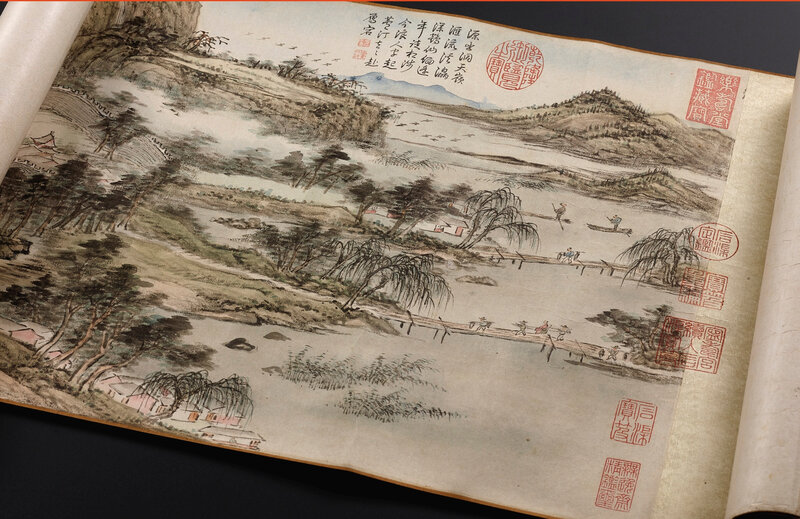
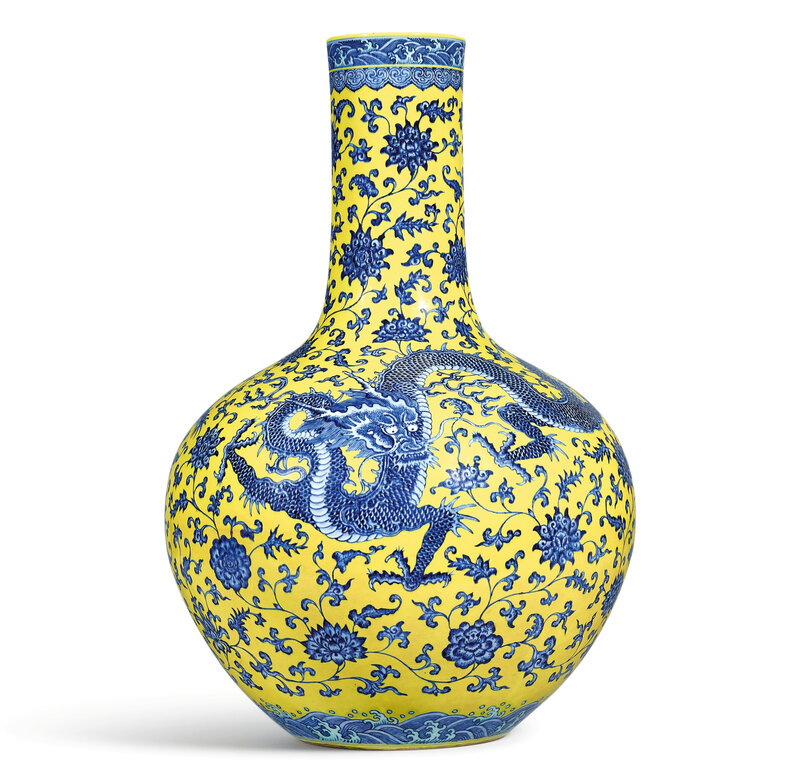

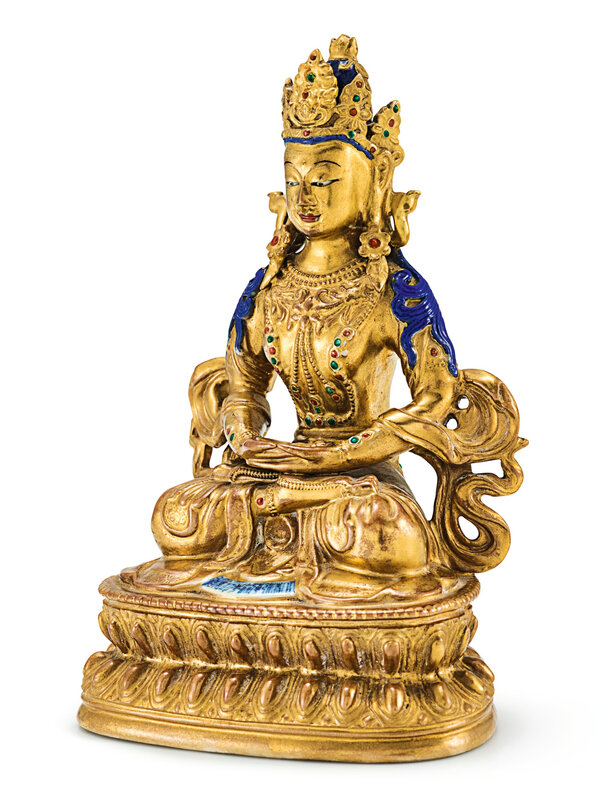


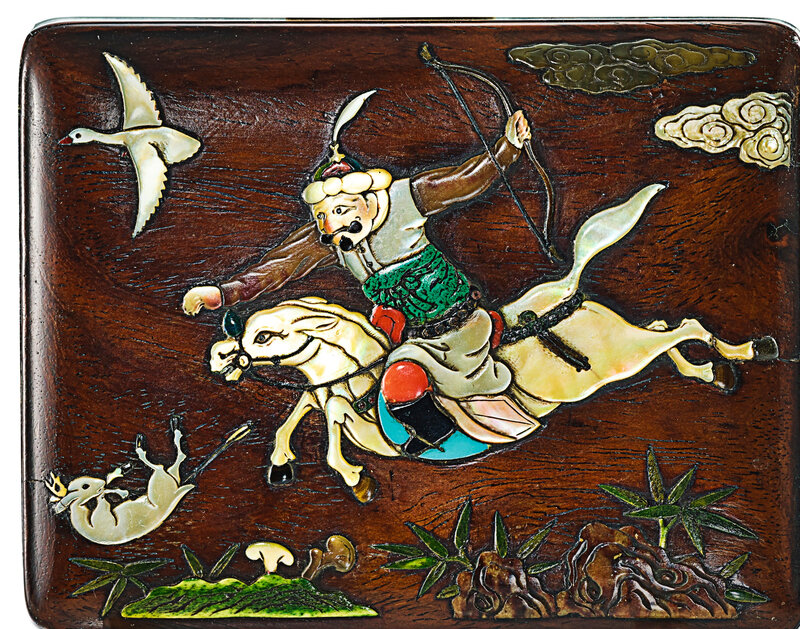














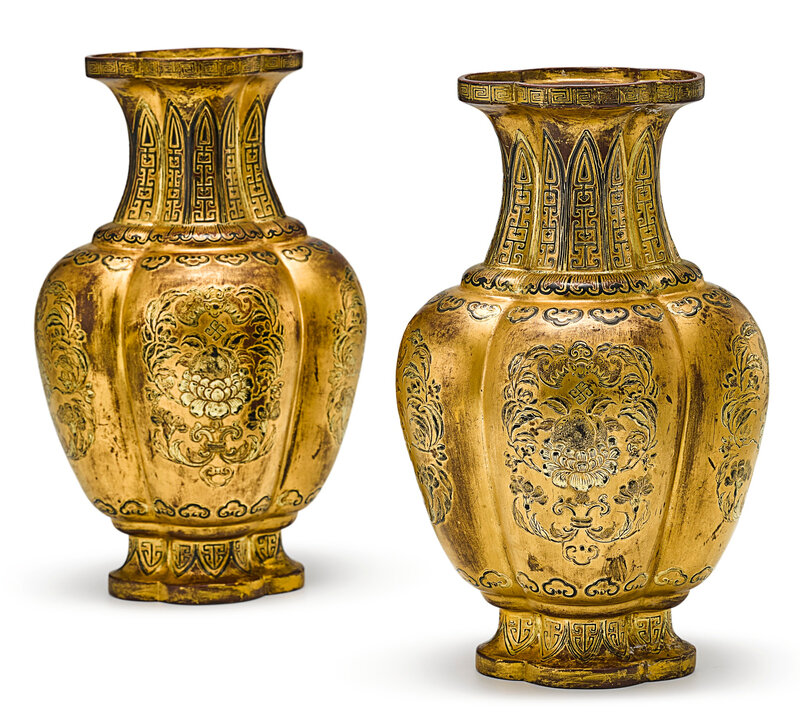


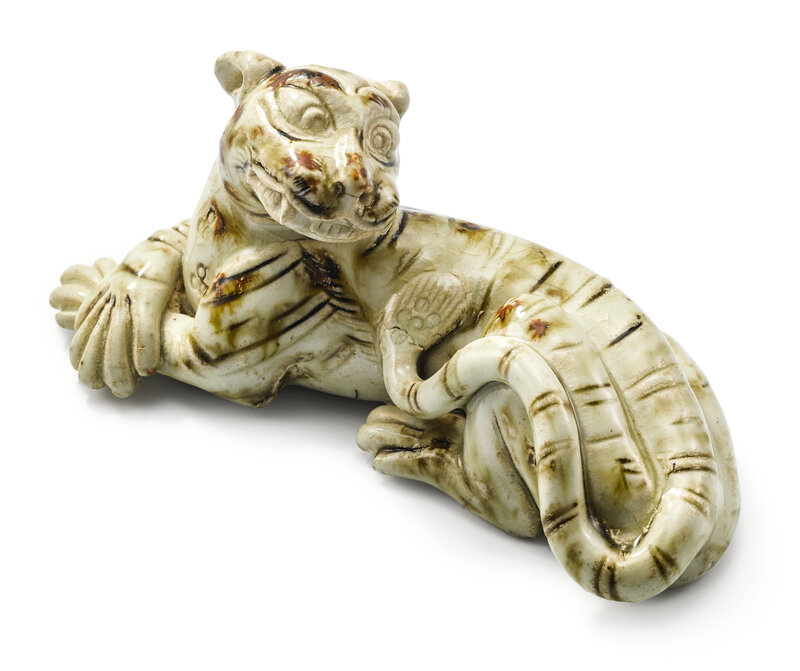













/image%2F1371349%2F20240409%2Fob_fc01a6_2024-nyr-22642-0899-000-a-rare-small-h.jpg)
/image%2F1371349%2F20240409%2Fob_1299ed_2024-nyr-22642-0898-000-a-rare-huanghu.jpg)
/image%2F1371349%2F20240403%2Fob_b08891_telechargement-4.jpg)
/image%2F1371349%2F20240403%2Fob_b24488_telechargement.jpg)